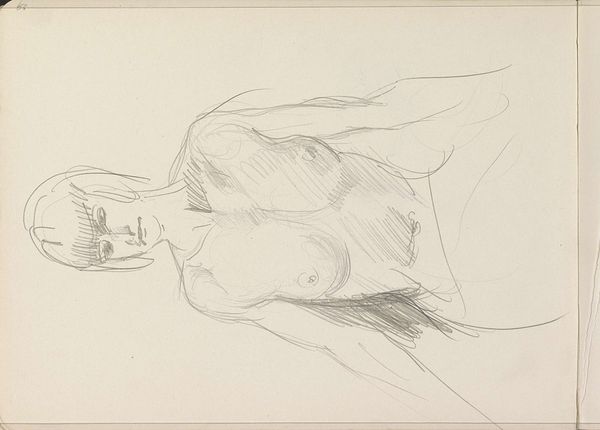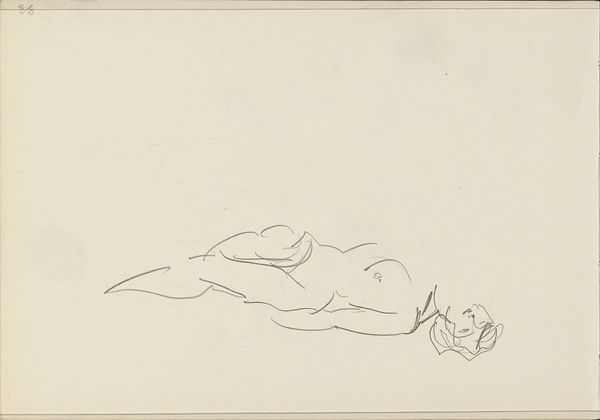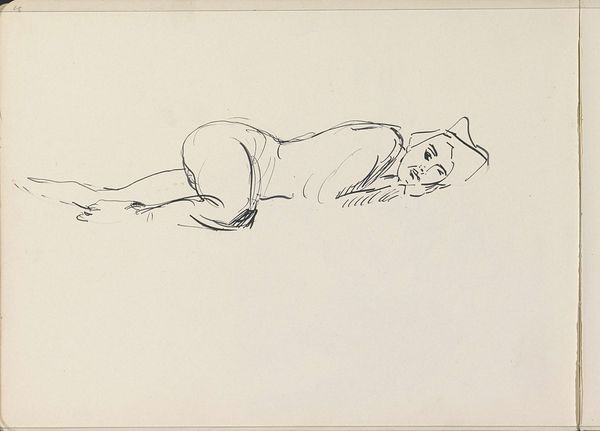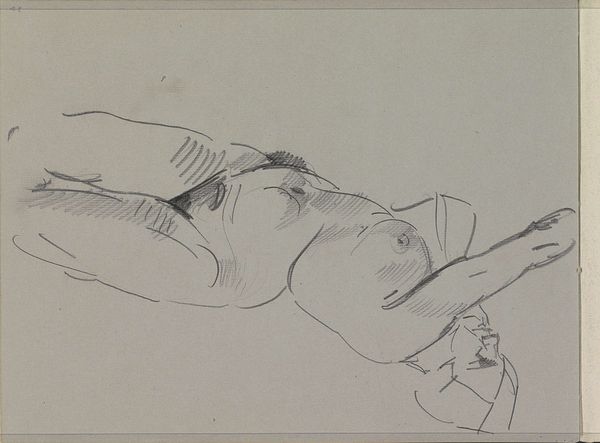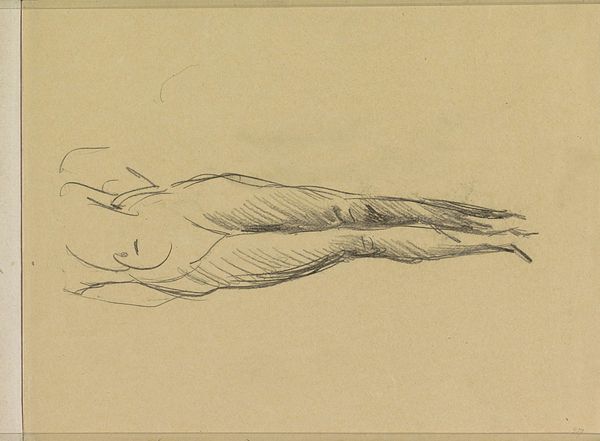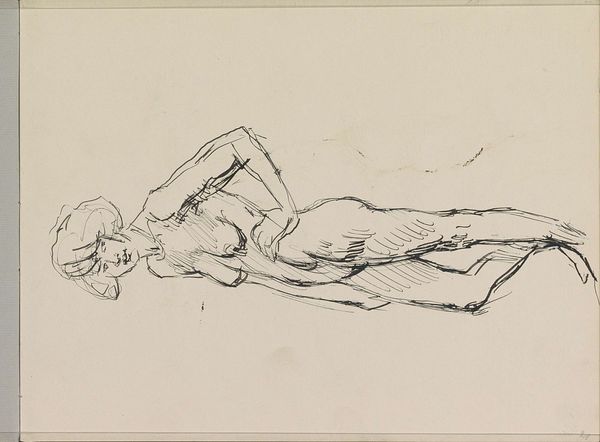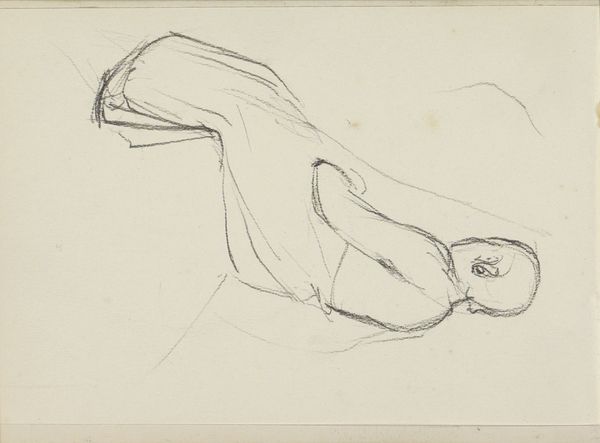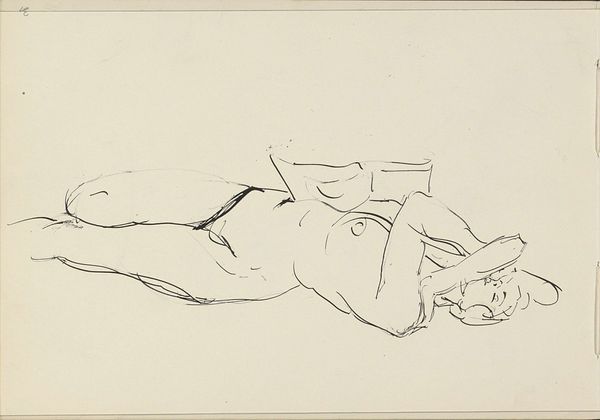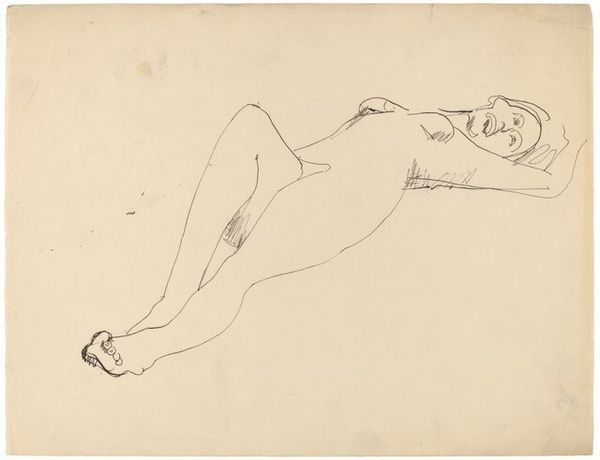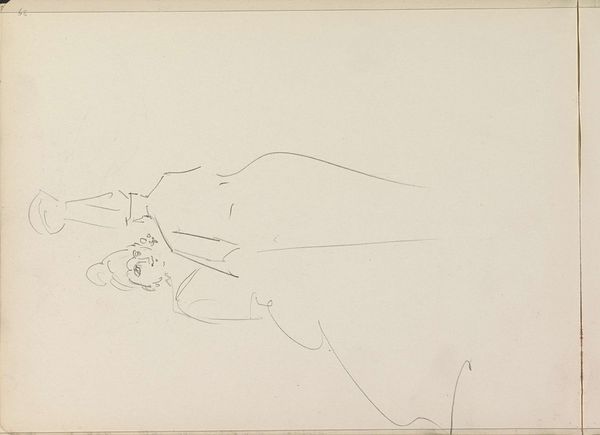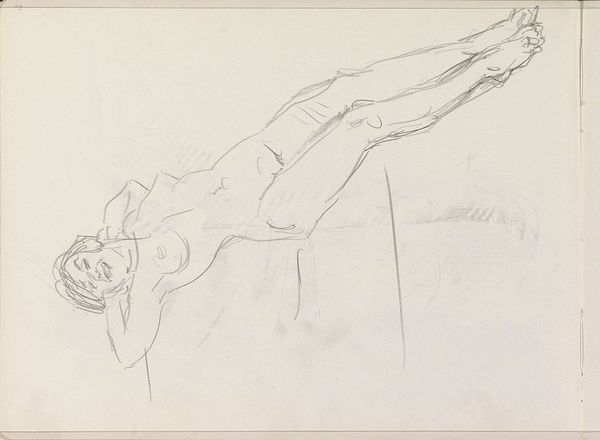
Copyright: Rijks Museum: Open Domain
Editor: This is "Vrouwelijk naakt, op de rug gezien," or "Female Nude, Seen from the Back," a pencil drawing by Isaac Israels, dating from around 1915 to 1925. It’s currently held at the Rijksmuseum. The simplicity of the sketch really strikes me; there's an almost brutal honesty in the stark lines. What do you see when you look at this drawing? Curator: The beauty resides precisely in the economy of line. Israels has captured the essence of the form with a minimum of means. Note the hatching, used to create volume and shadow, a subtle yet effective technique. The composition emphasizes a horizontal arrangement that underscores the recumbent figure's languid state. Editor: So it’s the deliberate choices about line and shading that communicate so much, even more than perfect realism would? Curator: Precisely. It's a distilled essence of form. Consider the relationship between positive and negative space. The emptiness surrounding the figure is as important as the drawn lines themselves, creating a sense of depth and isolating the subject for closer examination. Does the work perhaps suggest a specific kind of artistic philosophy to you? Editor: I guess I’m also noticing how unfinished it looks, like it's a fleeting moment. You can really see the artist’s hand. Curator: Indeed, that apparent "unfinished" quality contributes to its vitality. It speaks to the act of observation and the rapid translation of three-dimensional form onto a two-dimensional surface. In its structure, it presents a fascinating formal problem solved through artistic ingenuity. Editor: I appreciate you pointing out those deliberate structural aspects. I'll definitely look at sketches differently from now on, and it reinforces the power of restraint in art. Curator: Likewise, your reaction makes clear how an unburdened emotional engagement with structure makes art appreciation an immediate possibility for any and all viewers.
Comments
No comments
Be the first to comment and join the conversation on the ultimate creative platform.
